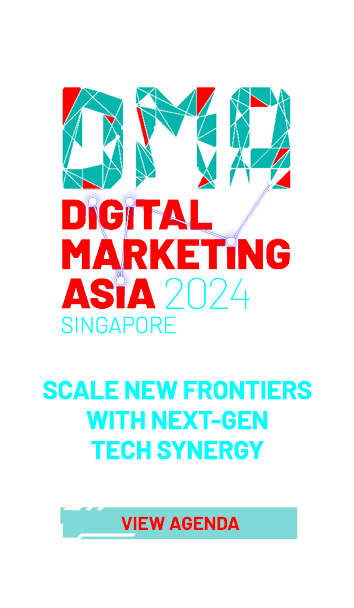



What are some of the must-know rules and regulations around fake OOH ads in SG?
share on
Fake Out of Home (FOOH) ads have become the industry's new favourite plaything as we see increased use of Augmented Reality (AR), Virtual Reality (VR) and Artificial Intelligence (AI).
From Chinese smartphone brand OPPO taking over the HSBC Rain Vortex in Jewel Changi Airport and turning the waterfall into liquid silver to HBO celebrating the launch of House of the Dragon season two by plastering Marina Bay Sands' towers and the exterior of the National Gallery with CGI banners, FOOH is everywhere we look.

Don't miss: Asian landmarks pick sides in dynamic 'House of the Dragon' FOOH campaign
However, Singapore is one of the most regulated markets for Digital Out-of-Home (DOOH) advertising, according to Franck Vidal, Vistar Media's director of Southeast Asia sales and partnerships.
"Digital and static OOH ads must follow strict guidelines set by the Building Construction Authority, which controls the display of outdoor signs to prevent cluttered streetscapes," he explained.
With significant guidelines and regulations in the OOH space, how are FOOH ads being regulated in Singapore considering that they are a relatively new medium?
According to Vidal, FOOH ads likely have a different approval process as compared to DOOH ads.
"You need to apply for a license if you display outdoor advertising. The term 'outdoors' refers to any signage visible in public spaces. The virtual nature of FOOH could mean fewer regulatory hurdles, but it’s crucial to consider the potential for these ads to become user-generated content (UGC) on social media, which could affect the city or country's image," he said, adding that while FOOH ads are essentially virtual and may bypass some physical constraints, it's still important to follow local guidelines to maintain the integrity of public spaces.
This was true of a FOOH ad by American skincare brand CeraVe which took over Marina Bay Sands to celebrate its launch in Singapore.
In one of the video ads for the campaign, the shadow of a giant-sized bottle of CeraVe's moisturising lotion is seen flying over the Singapore flyer. The lotion bottle later peeks out from behind from the Marina Bay Sands building.
The ad was pushed out on all platforms and popped up on many user feeds both on Instagram and TikTok.
"Without proper guidance and oversight, such ads might disrupt the visual harmony that a city such as Singapore strives to maintain. Therefore, it’s beneficial for brands to collaborate with local authorities to create FOOH campaigns that respect both creative freedom and regulatory standards. Ultimately, the aim is to amaze and connect with the audience authentically," said Vidal.
Are there regulations around FOOH in Singapore?
Saying that, with FOOH ads being relatively new in the industry, the industry and regulators might still be trying to catch up.
When MARKETING-INTERACTIVE spoke to Chloe Neo, CEO, Omnicom Media Group Singapore and chair for the media and OOH charter, Association of Advertising and Marketing Singapore (AAMS), she said:
The advertising industry has yet to receive clear regulations on fake OOH (FOOH) campaigns and executions.
She added that existing OOH regulations govern the use of physical real estate and do not extend into the use of virtual or air space.
"With the advent of new media formats and advanced technology, until the appropriate regulation is introduced, there is the due diligence consumers would expect from trusted brands and their partner agencies to ensure that creativity, authenticity, and trust are never mutually exclusive," said Neo.
She said that while the advertising industry awaits new regulations, respect for intellectual property, ownerships and originality have always been foundational and an essential cornerstone for the marketing community to thrive collectively.
"Taking a leaf from sponsored content and paid creator engagement, the industry could consider signposting FOOH ads to clearly state that they are virtual creations and provide proper credit to the real estate and/or assets featured," said Neo.
Neo explained that FOOH ads could open up a new world of possibilities in strategy, creativity and effectiveness for brand, creator, agencies and OOH partners including asset owners.
True enough, physical and virtual worlds are increasingly merging, providing agencies and media owners an opportunity to offer converged solutions and push creative boundaries to help brands create more exciting, breakthrough campaigns.
"As the chair for the media and OOH charter at AAMS, I believe we can bring various stakeholders together, including OOH vendors and the relevant authorities, to facilitate regulatory conversations," added Neo. "This is an interesting transformation for the OOH industry especially for the Singapore OOH industry where we have been seeing year-on-year OOH growth in share of media expenditure, surpassing the global benchmark. We will only be stronger when we come together to make the future of OOH bold and limitless."
Shufen Goh, principal and co-founder of R3 and president of AAMS, added on by saying that while there are currently no formal regulations specific to FOOH ads in Singapore, FOOH does not fall under the same laws as OOH.
However, by nature of it being short-form video distributed on social platforms, it must follow the same regulations as all other forms of digital video content, she said.
"There may also be permissions that need to be obtained for certain locations or landmarks depending on what you are trying to do and how much you manipulate the original footage, but brands should minimally need to get a license to the footage featuring the location," she said.
Could regulation stifle creativity?
Saying that, a current lack of specific regulations does gives marketers much more room to flex their creative muscles.
According to Vidal, over-regulating FOOH could stifle creativity, which is not what the industry needs.
He said:
Instead, we should focus on educating marketers and brands about the responsible use of FOOH.
"By doing so, we can ensure that the interests of all stakeholders—building owners, city authorities, marketers, agencies, and the public—are balanced and respected," he said.
Vidal added that the appropriate use of FOOH can enhance the city’s image while allowing for innovative advertising solutions.
"While FOOH might offer interesting possibilities, it's important for brands to remember that the goal isn’t to deceive but to create a genuine, impactful experience," he said.
Photo courtesy of @eyestudioae, @oppo, @samsonite_sg/Instagram, CeraVeSG/Tiktok
Gear up for the most captivating PR conference of the year! #PRAsia #Singapore & #Malaysia returns, bringing you the tools and insights you need to dominate in this dynamic environment. Join over 100 industry leaders and experts for an action-packed program filled with insightful discussions and valuable takeaways.
Related articles:
OPPO takes over global landmarks in quirky FOOH campaign
Fenty Beauty parachutes over Gardens by the Bay in FOOH campaign
CeraVe Singapore takes over Marina Bay Sands in FOOH campaign
share on
Free newsletter
Get the daily lowdown on Asia's top marketing stories.
We break down the big and messy topics of the day so you're updated on the most important developments in Asia's marketing development – for free.
subscribe now open in new window
